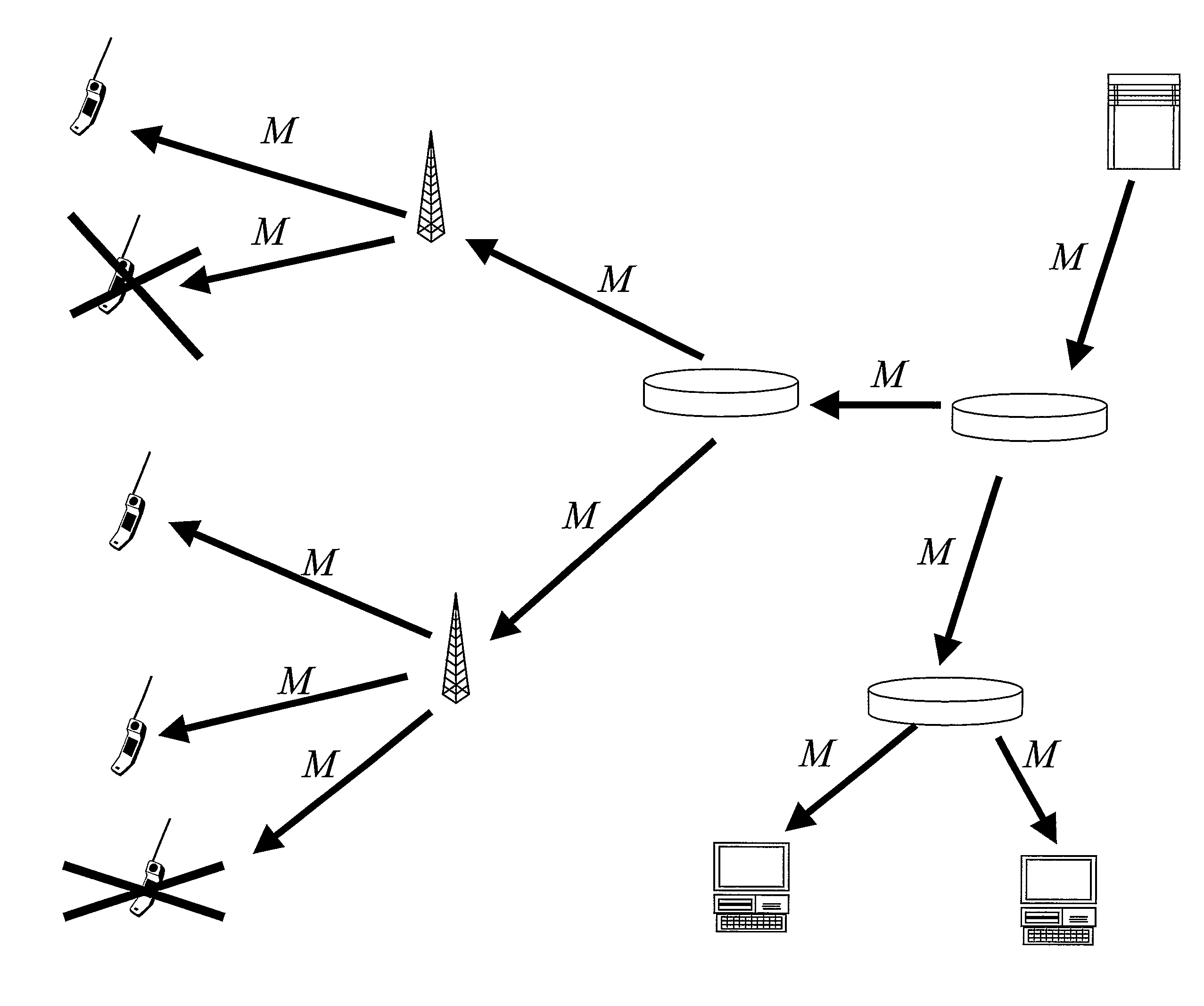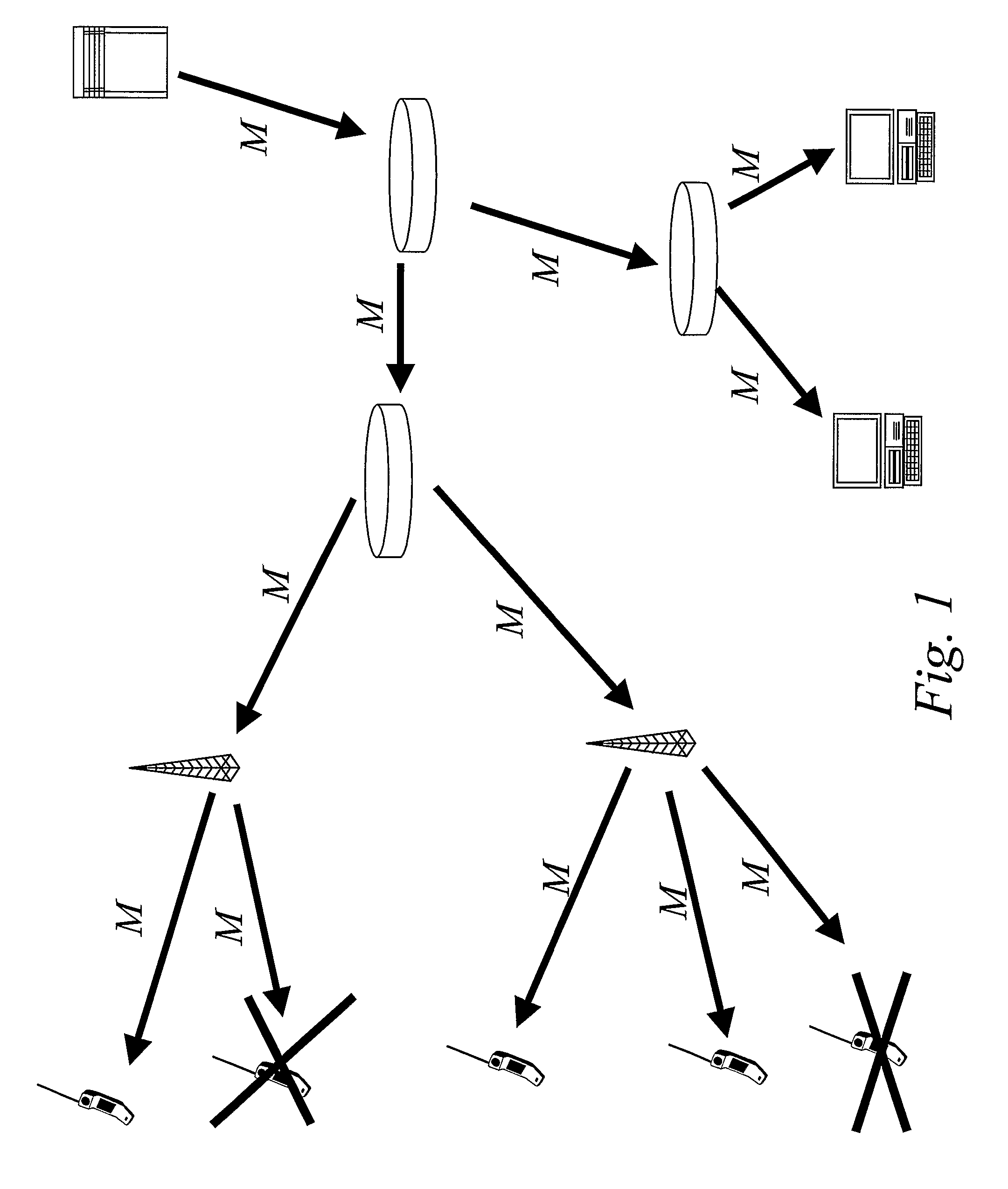Key management messages for secure broadcast
a key management and secure broadcast technology, applied in public key infrastructure trust models, digital computer details, instruments, etc., can solve problems such as the inability of participants to re-encrypt, the system is state-full or state-dependent, and the naive approach of sending the updated mdp-key individually for each member not scaling well, so as to reduce the size of the group key management message without compromising, and reduce the computational overhead
- Summary
- Abstract
- Description
- Claims
- Application Information
AI Technical Summary
Benefits of technology
Problems solved by technology
Method used
Image
Examples
Embodiment Construction
[0054]Throughout the drawings, the same reference characters will be used for corresponding or similar elements.
[0055]As schematically illustrated in FIG. 4, a first aspect of the invention concerns the introduction of a new abstraction layer comprising a top-level key that is typically used as the MDP-key. The new abstraction layer is illustrated on top of the exemplary basic protocols LKH and SD, respectively.
[0056]FIG. 5 is a schematic flow chart of a preferred basic embodiment of this aspect of the invention. In step S1, the new top-level key (e.g. for media protection) is established, and in step S2, the top-level key is preferably encrypted under the output key of the particular group key distribution protocol used. Next, in step S3, an authentication signature is applied on at least the encrypted top-level key. In step S4, the group key management message is modified by adding the encrypted top-level key and the authentication signature, for example in the same message elemen...
PUM
 Login to View More
Login to View More Abstract
Description
Claims
Application Information
 Login to View More
Login to View More - R&D
- Intellectual Property
- Life Sciences
- Materials
- Tech Scout
- Unparalleled Data Quality
- Higher Quality Content
- 60% Fewer Hallucinations
Browse by: Latest US Patents, China's latest patents, Technical Efficacy Thesaurus, Application Domain, Technology Topic, Popular Technical Reports.
© 2025 PatSnap. All rights reserved.Legal|Privacy policy|Modern Slavery Act Transparency Statement|Sitemap|About US| Contact US: help@patsnap.com



